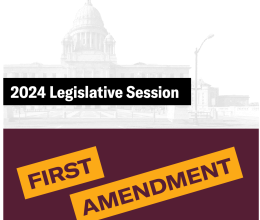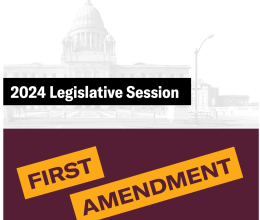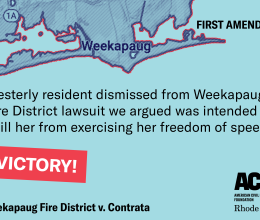By Johanna Kaiser
Banned Books Week 2017 is here, and as usual, we at the ACLU have been reminiscing about some of the books we read as children that have been banned or censored. My co-workers thought of notable works like The Adventures of Huckleberry Finn, The Giver, and Catch-22. These important books and many others have been frequently challenged because of their social commentary or message, but it’s not just literary classics that must be protected from censorship. We must also stand up for our right to read books that make us laugh, make us cry, or that don’t make us feel much of anything at all. One of my most beloved banned books was one that simply scared me. In fact, it chilled me right to my 6-year-old bones. That’s right, as a child of the 90’s, the things that went bump in the night for me came from Scary Stories To Tell In The Dark and its two sequels.
For anyone who didn’t develop a deep love of horror and the supernatural as an elementary school student like I did: Alvin Schwartz’s Scary Stories adapts folklore and urban legends for a young audience. The stories are dark, macabre, and shocking to anyone under the age of 13. There's the story of the boy who found a toe buried in his garden. There are re-tellings of the often told stories of The Hookman, the woman scared by the man repeatedly flashing his high-beams behind her, and the babysitter getting a call from inside the house. There's a story about staying in a haunted house for a night, and another about the stalking “vindow viper,” who really just wanted to wash and wipe your windows.
My older brother started reading these stories to me to make me squirm and lie awake at night. It worked, but before long, I was stealing the books from his room and reading the stories over and over and over again. I’d read them by myself, with my friends, and even made my (horrified) grandmother read them to me. I couldn’t get enough of the sometimes terrifying, sometimes confusing, sometimes funny tales. Looking back at the books, it’s easy to see why parents were concerned that their children were reading them. I’m sure they led to plenty of nightmares, tears, and pranks on siblings. The books’ original illustrations give me chills even now.
Far scarier to me, however, is how frequently this series of books has been challenged. There have been numerous efforts to remove the books from library shelves over its depiction of the “occult/Satanism” and violence, its “insensitivity,” and “religious viewpoint.” In fact, the American Library Association named it the Number 1 most frequently challenged book from 1990-1999. It remained at Number 7 during the first decade of the 2000’s, and was the 8th most challenged work in 2012, 31 years after the first book was published.
Of course, these stories aren’t right for everyone. Parents should keep their own children from reading them if they feel they are inappropriate, but a book should not be kept from everyone because some individuals do not want to read it. Just as those individuals are free to not read a book, others should always remain free to read it--as many times as they please.




